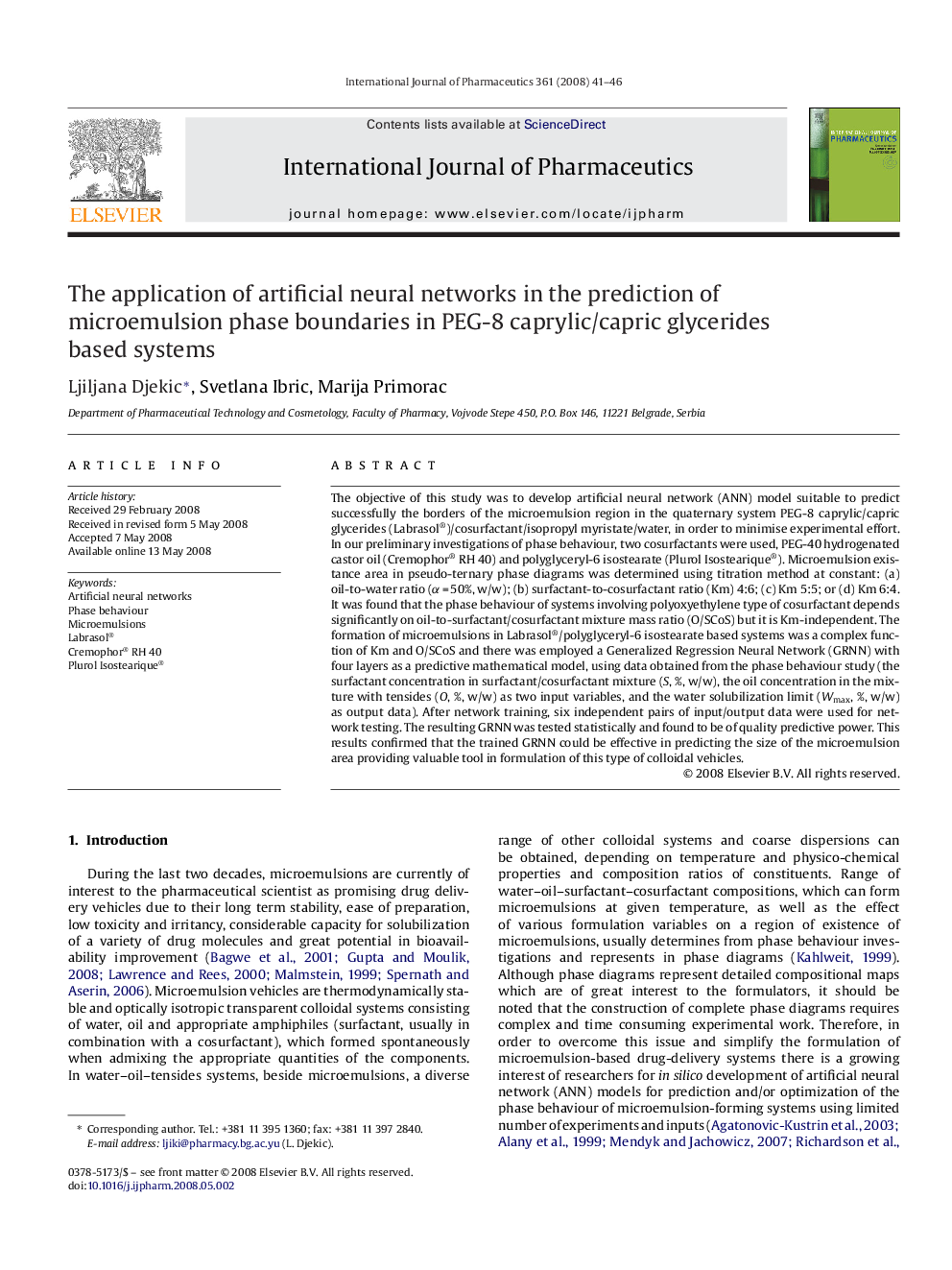| کد مقاله | کد نشریه | سال انتشار | مقاله انگلیسی | نسخه تمام متن |
|---|---|---|---|---|
| 2505234 | 1557485 | 2008 | 6 صفحه PDF | دانلود رایگان |

The objective of this study was to develop artificial neural network (ANN) model suitable to predict successfully the borders of the microemulsion region in the quaternary system PEG-8 caprylic/capric glycerides (Labrasol®)/cosurfactant/isopropyl myristate/water, in order to minimise experimental effort. In our preliminary investigations of phase behaviour, two cosurfactants were used, PEG-40 hydrogenated castor oil (Cremophor® RH 40) and polyglyceryl-6 isostearate (Plurol Isostearique®). Microemulsion existance area in pseudo-ternary phase diagrams was determined using titration method at constant: (a) oil-to-water ratio (α = 50%, w/w); (b) surfactant-to-cosurfactant ratio (Km) 4:6; (c) Km 5:5; or (d) Km 6:4. It was found that the phase behaviour of systems involving polyoxyethylene type of cosurfactant depends significantly on oil-to-surfactant/cosurfactant mixture mass ratio (O/SCoS) but it is Km-independent. The formation of microemulsions in Labrasol®/polyglyceryl-6 isostearate based systems was a complex function of Km and O/SCoS and there was employed a Generalized Regression Neural Network (GRNN) with four layers as a predictive mathematical model, using data obtained from the phase behaviour study (the surfactant concentration in surfactant/cosurfactant mixture (S, %, w/w), the oil concentration in the mixture with tensides (O, %, w/w) as two input variables, and the water solubilization limit (Wmax, %, w/w) as output data). After network training, six independent pairs of input/output data were used for network testing. The resulting GRNN was tested statistically and found to be of quality predictive power. This results confirmed that the trained GRNN could be effective in predicting the size of the microemulsion area providing valuable tool in formulation of this type of colloidal vehicles.
Journal: International Journal of Pharmaceutics - Volume 361, Issues 1–2, 1 September 2008, Pages 41–46